Scroll to:
Solving the Problem of Determining the Mechanical Properties of Road Structure Materials Using Neural Network Technologies
https://doi.org/10.23947/2687-1653-2022-22-3-285-292
Abstract
Introduction. Determination of mechanical properties of layered structures of highways is an urgent task. This is due, firstly, to the need to control the quality of new sections during the construction of highways. Secondly, to assess the condition of existing roads with the accumulation of damage and defects is of interest. The formation of multiple defects (cracks) changes the averaged viscoelastic properties of the components of the structure, specifically, the surface asphalt-concrete layers. The article discusses the use of neural network technologies to improve the accuracy of the recovery of viscoelastic properties. This approach is based on experimental methods. As an example, we can give the definition of the dynamic deflection of a structure from a falling weight, FWD.
Materials and Methods. The elastic modulus of a three-layer structure was determined on the basis of a neural network. To find out the solution accuracy, it was compared to the results of mathematical modeling and experimental data.
Results. The experimental and calculated parameters of the elastic modulus of individual layers of the road structure turned out to be very close. The proposed approach to determining the mechanical properties of materials of road structures allowed us to apply the obtained results to examination of the condition of individual elements and the entire road structure.
Discussion and Conclusions. The prospects of using artificial intelligence to determine the mechanical properties of layered structures was shown. Further improvement of methods and tools for analyzing the behavior of road structures under dynamic loading will expand existing approaches to assessing the condition of road structures.
Keywords
For citations:
Babushkina N.E., Lyapin A.A. Solving the Problem of Determining the Mechanical Properties of Road Structure Materials Using Neural Network Technologies. Advanced Engineering Research (Rostov-on-Don). 2022;22(3):285-292. https://doi.org/10.23947/2687-1653-2022-22-3-285-292
Introduction. Assessment of the state of road structures enables to predict the process of road operation, plan the timing and volume of repair and restoration activities, affect the efficiency and safety of road transport. Non-destructive testing methods are actively used1. In a number of scientific papers [1][2], the authors noted the reliability and cost-effectiveness of this approach. The non-destructive methods include the determination of the dynamic deflection of a structure from a falling weight (FWD). This approach involves the registration of the degree of deflection of the road structure surface at a certain distance from the impact point. At the same time, during the installation, the elastic modulus of the layers is calculated, the load and thickness of the layers of the structure are determined.
One of the major scientific research objectives in this direction is to provide timely detection of defects and changes in the components of road structures. The researchers have identified the factor that influences the main characteristics of the dynamic stress-strain state of the “road structure — ground” system more than others. This is a change in the dynamic elastic modulus of the elements of the pavement, the base, and the ground [3–5].2
An alternative tool for monitoring the state of road surfaces can be a neural network trained according to the results of experiments [6][7]. It is worth noting that neural networks are extensively used in the construction, including road construction. Neural networks are an effective tool for solving some classification problems, including construction. They help to perform regression analysis as well. The traditional approach to the construction of nonlinear models has a number of limitations. They are connected, firstly, with complex, hidden nonlinear relationships of the source data. Secondly, over time, it is possible to modify the structure of the links, which necessitates the transformation of the nonlinear model structure. The use of neural network technologies makes it possible to eliminate the disadvantages of the traditional approach. A neural network is able to independently determine functional dependences, approximate nonlinear functions with a given accuracy, and rebuild its architecture in the learning process. The above verifies the timeliness of the presented work.
Neural network technology opens up new opportunities for solving problems of design, optimization and diagnostics of building structures [8–11]. O. M. Maksimova writes that the possibility of additional training of the neural network provides refining the construction structure, improving its management [12]. In [13], it is noted that artificial intelligence can reduce the costs of companies, thanks to the timely diagnosis of construction projects. In [14], a broad overview of the possibilities of using neural networks in construction is presented. The author notes the multivariant use of artificial intelligence to solve a variety of complex nonlinear problems of forecasting, evaluation, optimization.
In [15], special attention is paid to the quality and state of the road network. Based on experimental data, two models are compared: multidimensional analysis and artificial neural network. They were developed to create a decision support system for assessing the operational condition of roads due to the hydrogeological situation. The author concludes that the neural network model is more reliable and efficient.
The selection of the type of neural network is of particular note. The authors [16] conclude that the type of neural network does not significantly affect the solution to the problem of calculating the elasticity modulus of the pavement layers. At the same time, the most similar results between the model and the target values were provided by a feedforward neural network model.
The study aims at solving the problem of reverse calculation of the elastic moduli for the dynamic deflection bowls from the impact of the FWD unit. The results of simulation of dynamic impact on the road structure, and those obtained by a neural network, are compared.
Materials and Methods. The dynamic effect of the FWD unit was simulated with the help of the program for calculating wave fields in the structure. The model of axisymmetric deformation of the medium used in the calculation can be analytically described as a multilayer half-space 𝐷, consisting of 𝑁 layers in a cylindrical coordinate system (𝑅,θ,𝑍). The axis of symmetry 𝑂𝑍 is directed vertically upwards and is orthogonal to the boundary plane of the half-space and its layers (Fig. 1).
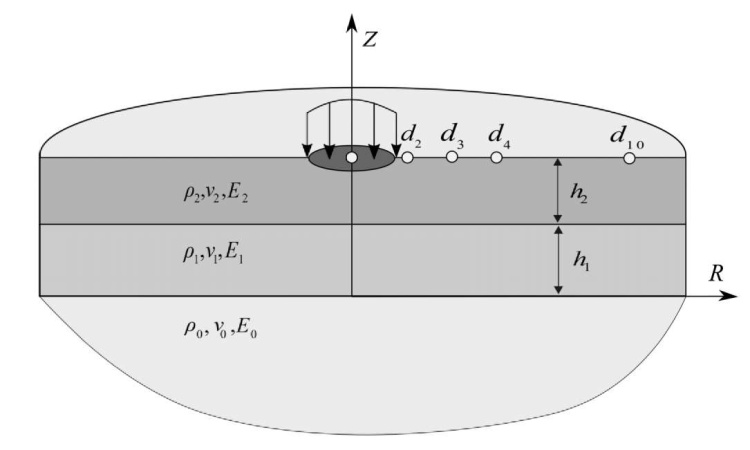
Fig. 1. Multilayer construction of pavement in longitudinal section
The medium motions are described by the dynamic Lame equations in displacements for a homogeneous linear elastic material within each layer:
 (1)
(1)
where 𝑢=(𝑢𝑅, 𝑢𝑍) — displacement vector, 𝑟 — radius vector of the observation point, λ,μ — Lame elastic coefficients, ρ — material density.
The layers of half-space 𝐷 are rigidly fastened to each other. When passing through flat interface boundaries, the displacement and stress vectors must match (σ𝑧,τ𝑧𝑟).
Each layer of the half-space has the following characteristics: thickness ℎ𝑖, density ρ𝑖, elasticity modulus  Poison's ratio
Poison's ratio 
Boundary conditions for stress vector 𝑠=(σ𝑧,τ𝑧𝑟) at the upper boundary of the multilayer medium 𝐷, distributed over the spot radius 𝑟0 of the contact between the wheel and the road structure, can be written as:
 (2)
(2)
where 𝑃0 — constant intensity of impact loading with duration τ.
To solve the problem, the integral Hankel transform is used in the radial Fourier coordinate and in time. As a result, a representation of the wave field is obtained:
 (3)
(3)
Here, 𝑆(𝑢,ω) — the Fourier–Hankel transform from the external load vector 𝑠; 𝑄(𝑢,ω) — Green’s matrix–function for a multilayer half-space obtained through the superposition principle as a sum of matrices for homogeneous half-space, as in [4].
To analyze the properties of the structure in solving the inverse problem, the results of experimental measurements of the bowl of dynamic deflections at specified observation points on the surface R = dk, k = 1, 2, ..., 10, are used. The average distance between them is 0.3 m. The measured characteristic at each point on the surface:

Figure 2 shows an example of the behavior of vertical deflection functions over time for a typical three-layer road structure.
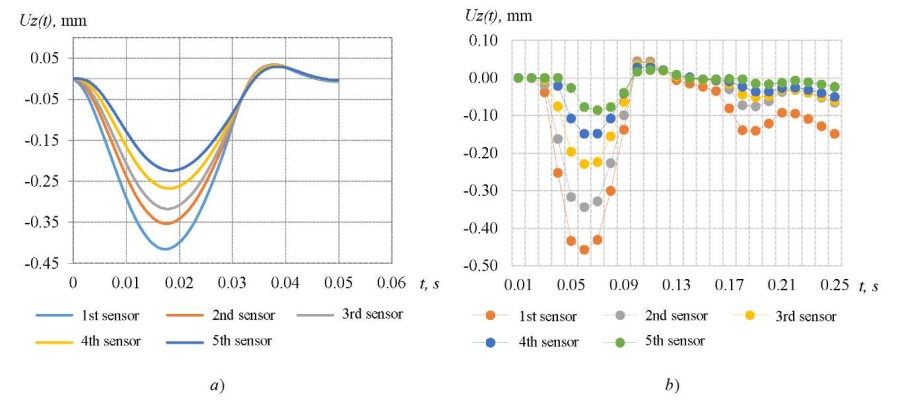
Fig. 2. Time dependences of vertical deflections 𝑢𝑧(𝑑𝑘,𝑡):
a — simulation data; b — experimental data
The procedure for restoring the elastic modulus of structure 𝐸𝑖 is based on minimizing the quadratic error function:

where  were obtained from an experiment using the FWD unit. The Levenberg-Marquardt method was chosen as the minimization algorithm. The elements of the gradient and the Hesse matrix of function 𝐹 were calculated through finite differences of the 1st order. At the same time, the output of elastic modules 𝐸𝑖 beyond the physical ranges of changes in these parameters was controlled.
were obtained from an experiment using the FWD unit. The Levenberg-Marquardt method was chosen as the minimization algorithm. The elements of the gradient and the Hesse matrix of function 𝐹 were calculated through finite differences of the 1st order. At the same time, the output of elastic modules 𝐸𝑖 beyond the physical ranges of changes in these parameters was controlled.
To solve the problem with the help of neural networks, a standard pavement design was considered (Table 1).
Table 1
Experiment pavement design

Table 1 shows the main structural elements of the road section under study. The model was constructed with a maximum elastic modulus (4,200 MPa), since the experimental measurement results were tied to an average air temperature of 20 °C. To determine the elastic modulus in the winter period, it is required to recalculate the indicators.
A fully connected neural network was implemented in Python using Keras deep learning library. Basic network parameters were as follows:
- 300, 30, 3 neurons in layers;
- 3,000 eras of learning.
The activation function in the hidden layers was ReLu, in the output layer — sigmoid. The network processed normalized data in the range from 0 to 1. After network calculations, denormalization into a numerical form was performed. The neural network was trained on a data set of 1,000 values obtained under modeling. On average, the error of neural network calculations on the test set was within 10%.
The neural network inputs were bowls of dynamic deflections. Figure 3 shows them at different moduli of elasticity of the layers of the road structure. The network outputs are values of elastic moduli of structural elements of the pavement.
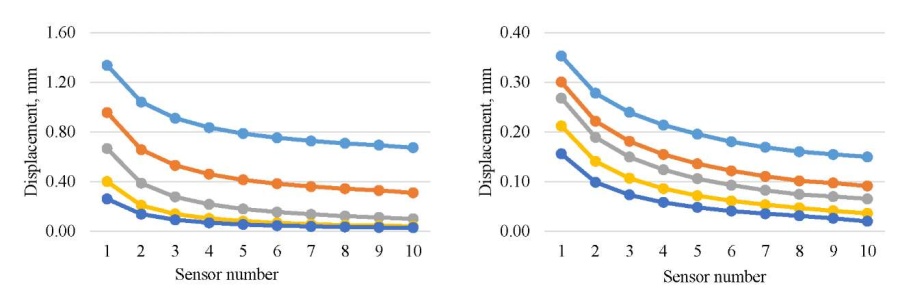
Fig. 3. Bowls of dynamic deflections with different elastic modules
Experimental data for the study were obtained using FWD unit on a road section with an asphalt concrete coating thickness of 10 cm, and a crushed stone layer thickness of 44 cm. The elastic moduli of the layers of road clothes were determined (Table 1). The layout of the sensors-geophones: 0 — 20 — 30 — 45 — 60 — 90 — 120 — 150 — 180 — 210 cm from the impact point.
Research Results. The authors have elucidated various combinations of structural elements:
- asphalt concrete layer + crushed stone layer;
- asphalt concrete layer + ground;
- crushed stone layer + ground;
- asphalt concrete layer + crushed stone layer + ground.
Let us study visualizations of the results of neural network calculations. Figure 4 shows the results obtained by the neural network during the test calculation for the 1st option. The accuracy of calculations exceeded 90 %.
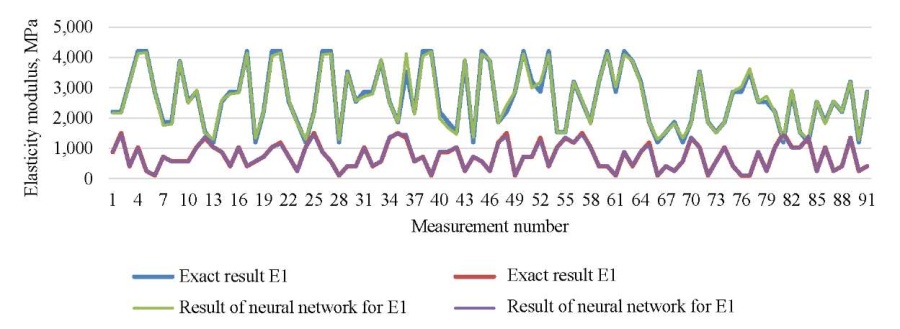
Fig. 4. Result of neural network training
in option 1 — “asphalt concrete layer + crushed stone layer”
As for the test calculations for options 2 and 3, in general, the calculation results were close to the first one. Figure 5 shows a good result of neural network training on all layers of the structure. The presented values were obtained on the test set by a random sample.

Fig. 5. Error of neural network calculations under option (1)
The graphical representation of the ratio of the expected and the obtained result of the elastic modulus in Figure 5 indicates insignificant errors in the test calculation of the layers of the road structure for option 1.
Special attention should be paid to the text calculation for option 4.
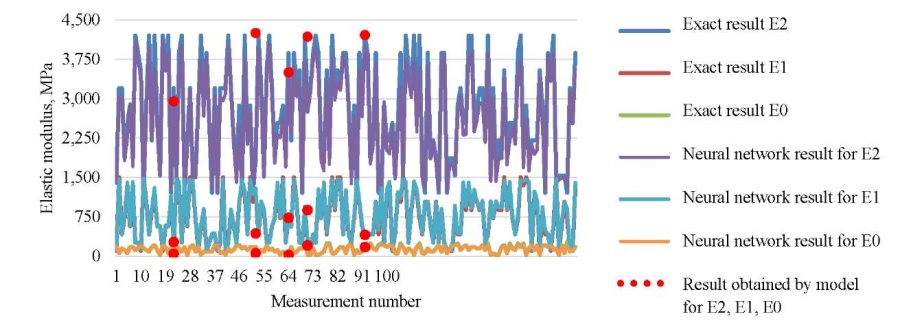
Fig. 6. Result of neural network training
in option 4 — “asphalt concrete layer + crushed stone layer + ground”
Figure 7 shows the statistical distribution of the error of neural network calculations. Note that the average error of most measurements is about 10 %. However, in some cases, there is maximum deviation close to 23 % (on the histogram, this is a group of 20 % or more).

Fig. 7. Error of neural network calculations
under option 4 — “asphalt concrete layer + crushed stone layer + ground”:
a — at Е2∈[ 1,200; 4,200] MPa;
b — at Е1 ∈ [ 100; 1,500] MPa;
c — at Е0∈[ 20,300] MPa
From the data in Figure 7, conclusions can be drawn about the accuracy of neural network calculations on the test set. In the first case (Fig. 7 a), we note that of the entire test set, 41 % (82 measurements) had an error in the range of 5–10 %. Similar indicators of 52 measurements (26 %) — 2–5 %. In 30 cases (15 %), values of 0–2 % were recorded. 36 measurements (18 %) yielded results of 10–20 %.
In Figure 7 b, the maximum indicator was 70 values for errors of 2–5 %. According to Figure 7 c, the results of calculations of the elastic modules of the ground had the smallest error. Thus, there are 116 values within 0–2 %. This is 58 % of the test set. 44 and 16 values are within 10 % of the error (22 % and 8 %, respectively).
Discussion and Conclusions. Hence, neural network technology has proved to be an effective tool for determining the mechanical properties of materials of road structures. When solving the inverse problem, a high degree of recovery of the elastic modulus values was noted. The average error of calculations did not exceed 10 %.
The neural network training options according to the values of the elastic moduli of the layers were studied. The error recorded in these cases was mainly due to insufficient training of the network. To solve the problem, it is required to increase the amount of data for training.
The results of the neural network technology application were consistent with the experimental data obtained after the operation of the FWD dynamic loading unit.
1. Eremin RA, Kulizhnikov AM, Pudova NG. Metodika kompleksnogo obsledovaniya dorozhnoi odezhdy avtomobil'nykh dorog s primeneniem metodov nerazrushayushchego kontrolya. In: Proc. 16th All-Russian Sci.-Pract. Conf. of Survey Contractors. Moscow: Geomarketing; 2021. P. 438–446. (In Russ.)
2. Qinwu Xu. Development of a Computational Method for Inverting Dynamic Moduli of Multilayer Systems with Applications to Flexible Pavements under FWD Tests: dis. … doc. of philos. Texas, 2014. 223 p.
References
1. Федосов, А. В. Методы неразрушающего контроля / А. В. Федосов, Л. А. Гайнуллина // Электротехнические и информационные комплексы и системы. — 2015. — Т. 11. — С. 73–78.
2. Kychkin, V. I. Not Destroying Dynamic Quality Monitoring of Road Clothes / V. I. Kychkin, V. S. Jushkov // Naukovedenie. — 2013. — Vol. 14. — P. 34.
3. Углова, Е. В. Оценка модулей упругости слоев дорожной одежды на стадии эксплуатации автомобильных дорог / Е. В. Углова // Вестник Томского государственного архитектурно-строительного университета. — 2009. — № 2. — С. 170–178.
4. Углова, Е. В. Комплексный подход к исследованию характеристик динамического деформирования на поверхности нежестких дорожных одежд с использованием методов неразрушающего контроля / Е. В. Углова, А. Н. Тиратурян, А. А. Ляпин // Вестник Пермского национального исследовательского политехнического университета. Механика. — 2016. — № 2. — С. 111–130. https://doi.org/10.15593/perm.mech/2016.2.08
5. Тиратурян, А. Н. Оценка деградации прочности нежестких дорожных конструкций на основе натурных измерений на участке автомобильной дороги М-4 «Дон» в п. Тарасовский / А. Н. Тиратурян, С. А. Ольховой // Инженерный вестник Дона. — 2017. — № 2. — С. 122.
6. Babushkina, N. Analysis of Neural Network Results Based on Experimental Data during Indentation / N. Babushkina, A. Lyapin, A. Kovaleva // E3S Web of Conferences. — 2020. — Vol. 224. — P. 01018. http://dx.doi.org/10.1051/e3sconf/202022401018
7. Babushkina, N. Solving the Problem of Classification of Material Properties Using a Neural Network / N. Babushkina, A. Lyapin // Journal of Physics Conference Series. — 2021. — Vol. 2131. — Р. 032084. https://doi.org/10.1088/1742-6596/2131/3/032084
8. Kulkarni, P.S. Artificial Neural Networks for Construction Management: A Review / P.S. Kulkarni, S. N. Londhe, M. C. Deo // Journal of Soft Computing in Civil Engineering. — 2017. — Vol. 1/2. — Р. 70–88. HTTPS://dx.doi.org/10.22115/scce.2017.49580
9. Батурина, Н. Ю. Нейросетевые модели в задачах исследования строительных конструкций / Н. Ю. Батурина // Инженерный вестник Дона. — 2013. — № 4. — С. 201.
10. Elfaki, A. O. Using Intelligent Techniques in Construction Project Cost Estimation: 10-Year Survey / A. O. Elfaki, S. Alatawi, E. Abushandi // Advances in Civil Engineering. — 2014. — Art. 107926. https://doi.org/10.1155/2014/107926
11. Patel, D. A. Evaluation of Construction Projects Based on the Safe Work Behavior of Co-employees through a Neural Network Model / D. A. Patel, K. N. Jha // Safety Science. — 2016. — Vol. 89. — Р. 240–248. https://doi.org/10.1016/J.SSCI.2016.06.020
12. Максимова, О. М. Развитие и применение нейросетевых технологий для задач механики и строительных конструкций / О. М. Максимова // Вестник Иркутского государственного технического университета. — 2013. — № 8. — С. 81–89.
13. Газаров, А. Р. Преимущества использования искусственного интеллекта в сфере строительства / А. Р. Газаров // Известия Тульского государственного университета. Технические науки. — 2020. — № 4. — С. 136–139.
14. Waziri, B. S. Artificial Neural Networks in Construction Engineering and Management / B. Sh. Waziri, K. Bala, Sh. A. Bustani // International Association for Sustainable Development and Management (IASDM). — 2017. — Vol. 6. — Р. 50–60. http://dx.doi.org/10.7492/IJAEC.2017.006
15. Dell’Acqua, G. Using Artificial Neural Network and Multivariate Analysis Techniques to Evaluate Road Operating Conditions / G. Dell’Acqua, M. De Luca, D. Zilioniene / Journal of Risk Research. — 2018. — Vol. 21. — Р. 679–691. https://doi.org/10.1080/13669877.2016.1264445
16. Elshamy, M. M. M. Evaluation of the Elastic Modulus of Pavement Layers Using Different Types of Neural Networks Models / M. M. M. Elshamy, A. N. Tiraturyan, E. V. Uglova // Advanced Engineering Research. — 2021. — Vol. 21. — P. 364–375. https://doi.org/10.23947/2687-1653-2021-21-4-364-375
About the Authors
N. E. BabushkinaRussian Federation
1, Gagarin sq., Rostov-on-Don
A. A. Lyapin
Russian Federation
1, Gagarin sq., Rostov-on-Don
Review
For citations:
Babushkina N.E., Lyapin A.A. Solving the Problem of Determining the Mechanical Properties of Road Structure Materials Using Neural Network Technologies. Advanced Engineering Research (Rostov-on-Don). 2022;22(3):285-292. https://doi.org/10.23947/2687-1653-2022-22-3-285-292











































